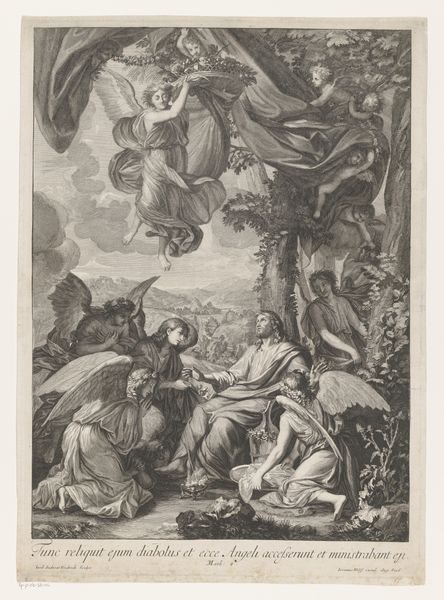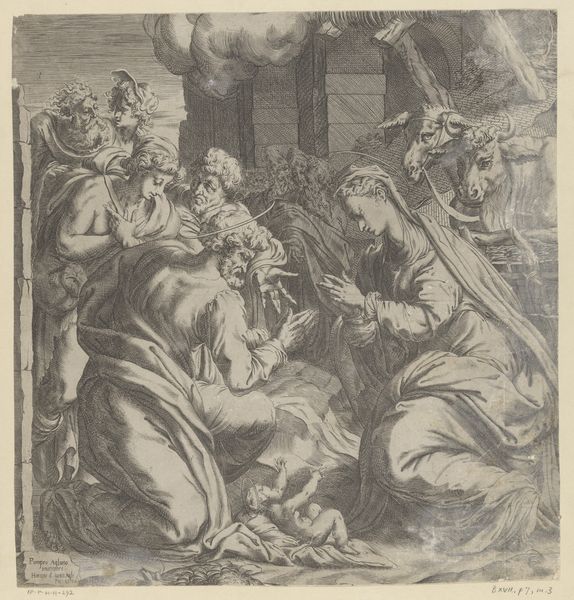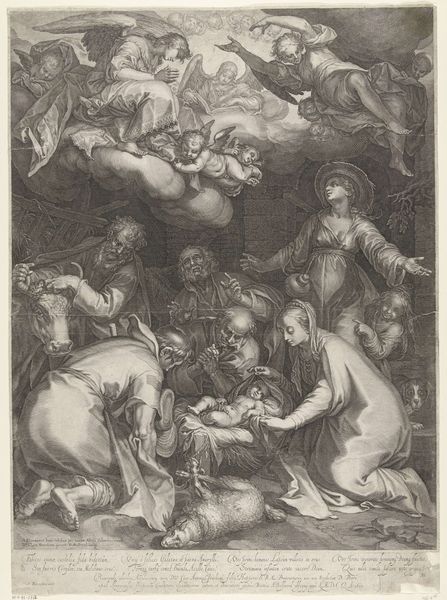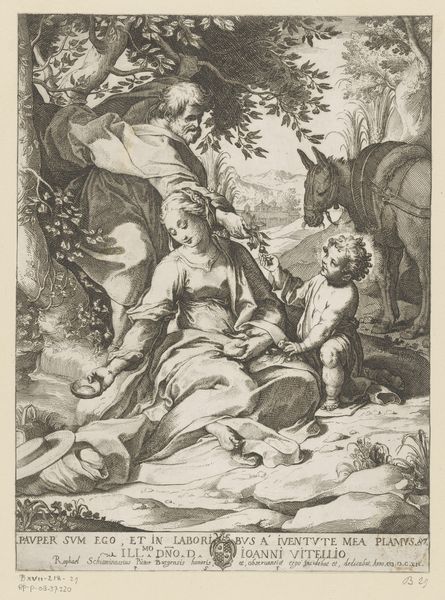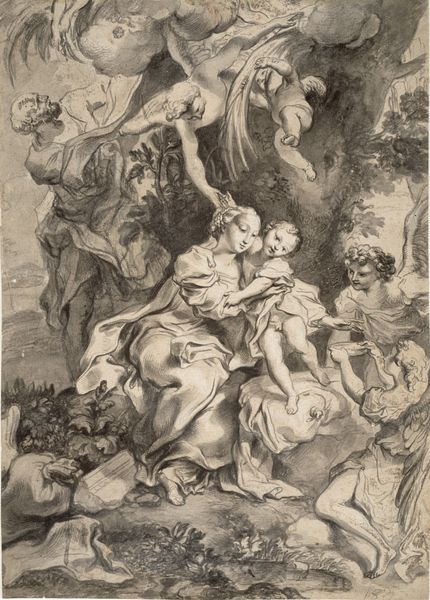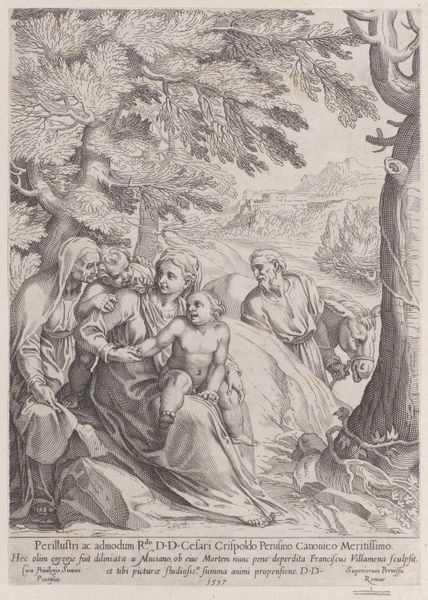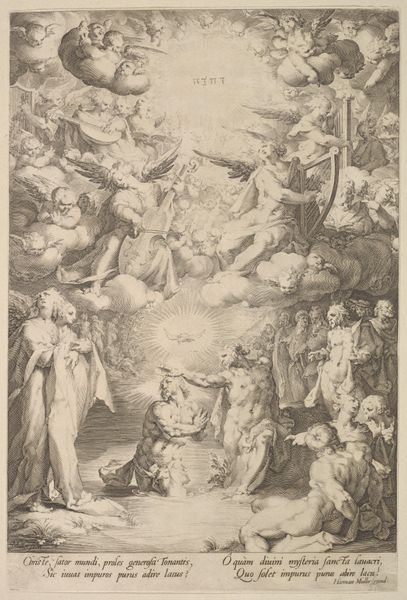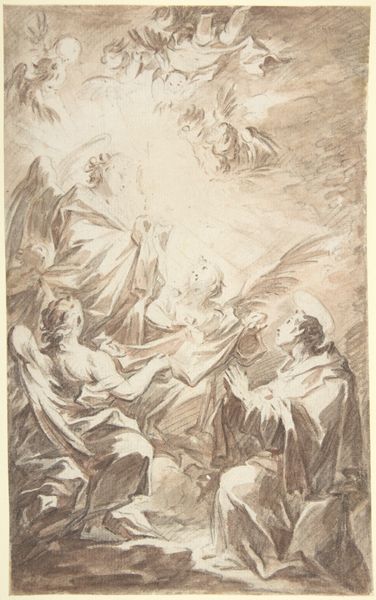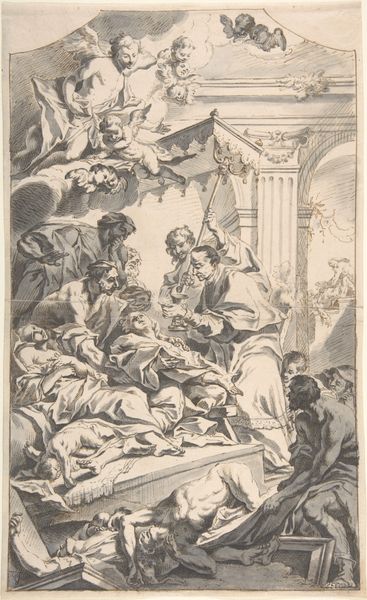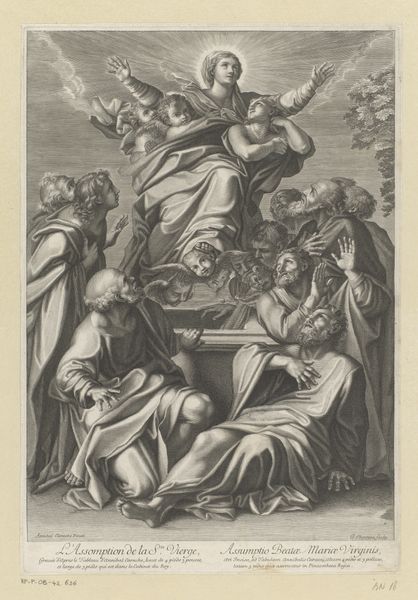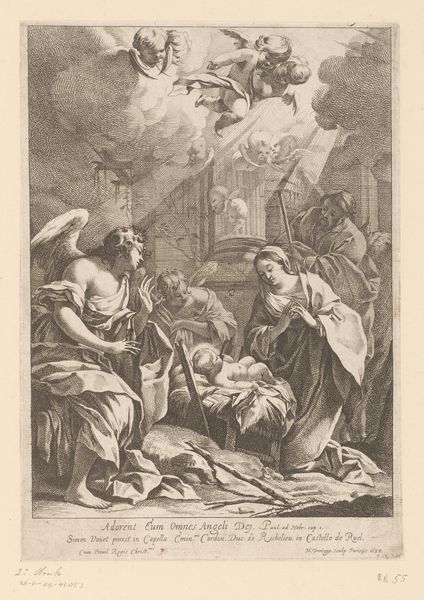
print, engraving
#
baroque
# print
#
figuration
#
history-painting
#
italian-renaissance
#
engraving
Dimensions: height mm, width mm
Copyright: Rijks Museum: Open Domain
Curator: Look at this intricate print, "Maria overhandigt het Christuskind aan Franciscus," from 1597, engraved by Francesco Villamena. Editor: My goodness, it's striking! The figures practically burst off the page. There’s a palpable energy—a divine moment captured in monochrome. I’m curious about the social role of images like this in the period. Curator: Indeed. Villamena, active in Rome, was known for disseminating imagery that amplified the Catholic Church's message during the Counter-Reformation. Consider the economic aspect, the sheer number of these prints that were created. Engravings democratized art viewing as compared to traditional fresco paintings that the poor rarely had access to, if ever. Editor: Yes, the access! That is especially significant given the subject matter. I mean, it is essentially propaganda promoting piety to the masses. I imagine such depictions were prevalent across Europe as Catholicism’s hold on power was continuously contested, shaping a visual language understood throughout different cultures, wouldn't you agree? Curator: Absolutely, these engravings played a pivotal role. And observe Villamena’s skillful handling of the engraving medium. The meticulous lines create textures simulating volume and depth. Also look to the cherubs and Mary herself, whose robe would require dozens if not hundreds of hours to sew by hand! Editor: The textural variety is certainly impressive. The way the light catches on the fabric of Mary's dress, the clouds above, it gives a sense of movement. Curator: Think about the collaborative labor that goes into just one of these images being distributed. First the composition, and its realization onto a copper plate. The artist would need workshops of their own with highly skilled laborers to create this product! And not to forget the role of distributors too, these images would not appear spontaneously but would rather move with trading routes for maximum impact. Editor: Considering all these perspectives shifts my understanding considerably. I move beyond art as a beautiful creation. It really emphasizes the interplay of patronage, production and social function of religious imagery in Europe during such an interesting historical context. Curator: Exactly. And it’s this multifaceted appreciation that allows us to see its enduring significance. Editor: A most enlightening conversation. I will keep an eye out for more prints from this era!
Comments
No comments
Be the first to comment and join the conversation on the ultimate creative platform.

